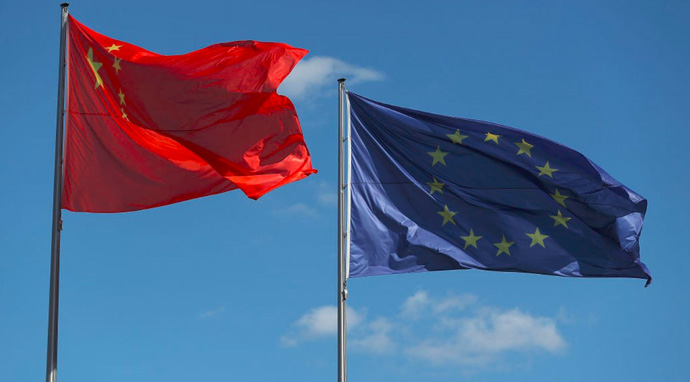
Since 2013, China’s Belt & Road Initiative (BRI) has been making waves in Asia, with projects in place in Hong Kong, Indonesia, Laos, Malaysia, Pakistan, Sri Lanka and Thailand. In Europe’s biggest capitals, however, there has been significant skepticism about the Chinese government’s development strategy, which “centers on an 11,000 kilometer railway line across the Eurasian continent to connect China with Europe via Central Asia.” This skepticism stems from China’s staunch support of its state-owned enterprises, Beijing’s hawk-eyed focus on European technologies, and the massive infrastructure projects China has embarked on. Like Washington, Brussels struggled to accept China’s massive projects as anything but a play for expanding Beijing’s circle of influence and power. Reinforcing this notion are examples such as that of Sri Lanka’s inability to repay Chinese loans, resulting in the strategically located Hambantota port being handed over to Chinese control until the year 2116. As Ravi Prasad said last year, “Clearly, European countries aren’t buying China’s rhetoric of the BRI as “win-win cooperation.”
China’s history of involvement with the European Union did not bring any reassurance. Montenegro had been sucked into a project which cost close to a quarter of the entire country’s GDP, and China’s apparently unhindered acquisition of ports in Belgium, Spain, Italy and Greece has raised the alarm in neighboring nations. As European foreign direct investment in China decreases, China is buying up more and more of the EU. According to The Diplomat, “To secure its own political and economic interests, the EU had to put forward an ambitious and comprehensive response, which was to strengthen its own links with the host countries and to present them with a credible and sustainable alternative offer for connectivity financing.” China’s response to this is simply what Prime Minister Li Keqiang said at the July 2018 16+1 Summit: “We have promoted 16+1 cooperation as part of the efforts to promote European integration. We welcome a united and prosperous Europe. We welcome a strong euro,”
Despite EU leaders criticizing the BRI for being – in their view – unsustainable from an economic, environmental, social and financial perspective, Europe now has some use cases to look at; the EU-China Connectivity Platform has paved the way for discussions on the development of sustainable, railway-based corridors connecting China to Europe. The European Investment Bank (EIB) and the European Bank for Reconstruction and Development (EBRD) have both committed to relationships with China, with the EIB committing over $560 million and the EBRD providing financial partnership through “investments and loans, as well as promote the so-called ‘soft’ infrastructure of policy reforms.”
In September 2018, the European Commission adopted the Connectivity Strategy, emphasizing that any investments made would “respect labor rights, not create political or financial dependencies, and guarantee a level playing field for business.” European governments have demanded open procurement and transparency in their dealings with Beijing. This may have been a reaction to the fiscal instability created by BRI infrastructure projects in the EU area. A close look at the Commission Assessment report of the Economic Reform Programme of Montenegro shows that EU rules on public procurement, protection of the environment, and aid are often conveniently sidestepped. The year prior, the European Commission investigated China’s flagship BRI project in the EU: the rail link proposed to connect Serbia and Hungary was found to have significant shortcomings in the financial viability and procurement plans for the almost 3 billion euro project.
China’s response to the skepticism has been a series of sweeping promises focusing on labor rights, transparency, and improving market access as well as encouraging collaborations such as that between Chinese banks and the EIB and EBRD. The nation of over 1.3 billion (as of 2017) does not seem cowed by opposition amongst EU member states, however. According to the Mercator Institute for China Studies, China has proceeded full steam ahead with building political and institutional ties with Eastern European countries, with regular ministerial conferences, and promises for increased economic cooperation. China’s increased interactions with Austria and Greece have prompted even more unease.
It might be too early to say that China’s European policy will succeed, but as Beijing seeks to push through its 16+1 economic plan, friction with Brussels will in all likelihood continue to mount. As China continues to work towards strengthening its influence in difference parts of Europe, its message that is supports European cohesion will become less and less believable. In the end, the political cost for the EU and its citizens will likely be significant.